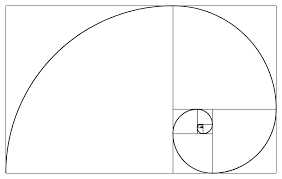0, 1, 1, 2, 3, 5, 8, 13, 21…
The famed, infinite Fibonacci sequence forms its pattern using a “one step forward, two steps back” approach. It generates each subsequent nth term by adding the two preceding numbers. A mathematical concept rarely elicits excitement; however, Fibonacci’s sequence can help explain how nature creates order and how humans respond to patterns, influencing a myriad of domains. Shown in ecology, finance, music, algorithms, and poetry, this sequence is more powerful than you might have been led to believe in your fifth grade math class.
The sequence predates its publication by Leonardo of Pisa (the Fibonacci) and can be traced back to ancient India. It was specifically used for defining rhythm in Sanskrit poetry between long and short syllables. Leonardo of Pisa came across the same pattern upon conducting a theoretical experiment to track rabbit population growth, which spread to the West after his publishing. He postulated how many pairs there would be after mating every month. One pair mates and gives birth to another pair in the third month (creating 1, 1, 2). This growth birthed the pattern we know today. As each number in the sequence gets logarithmically larger, a spiral can be drawn representing the proportions between Fibonacci squares.
Further deriving and taking the quotient between each successive pair lead closer to the golden ratio: 1.61. A number and sequence seemingly so obscure governs the shapes of nautilus shells, ears, galaxies, and pine cones. These concepts, Fibonacci and the golden ratio, are found in natural happenings like honeybee female to male ratios and manufactured into trader techniques and poetic rhetoric.
Seeing the utilization of this sequence in the workplace, what purpose leads plants, mollusks, and even hurricanes to integrate this rhythmic code? The appearance of these buds, shells, and weather patterns are just as organized and purposeful as the uniform cells inside, where every part is formed with function in mind. A possible explanation is summarized in Anjan Chatterjee’s literary exploration, “The Aesthetic Brain,” where he suggests that “these arrangements and spirals seem to minimize energy in systems” due to sunlight and nutrient needs. Chatterjee notes that these seemingly coincidental patterns appearing countless times in nature bolsters the idea that this composition is no accident. Rather than nature being completely random, this concept suggests that it is more orchestrated chaos.
“A simple “one step forward and two steps back” rhythm to numbers has had such great impact on our world, humans and nature alike.”
Much can be discerned about the ways math reveals nature’s hidden patterns to us observers. A simple “one step forward and two steps back” rhythm to numbers has had such great impact on our world, humans and nature alike. This infinite string of numbers has been harnessed from the wild as a tool for both analysts of the 21st century and poets of the second.
- The Aesthetic Brain (2013). ISBN: 9780190262013






